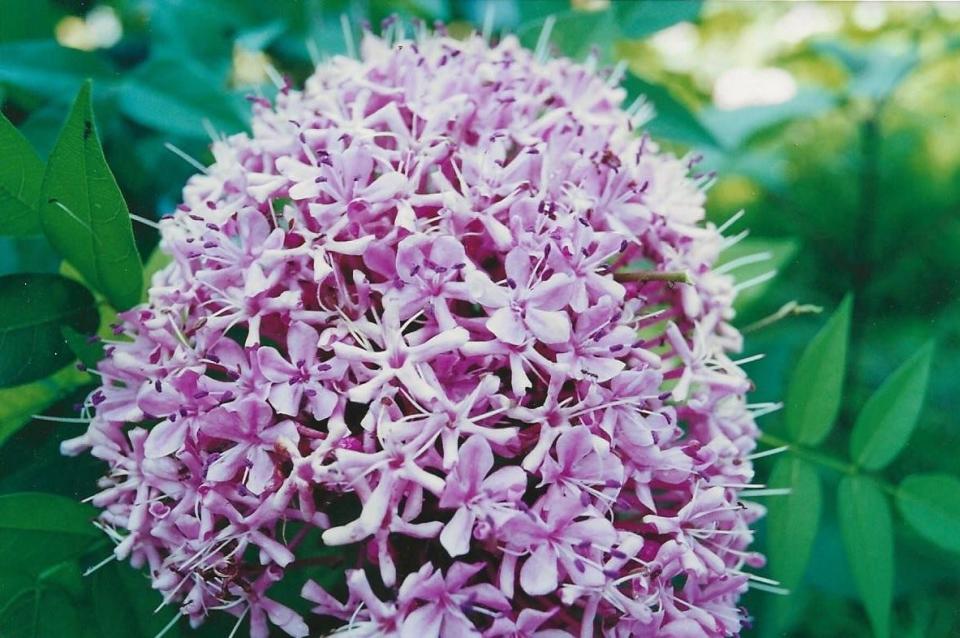You may know that “fish tale” means an exaggerated, boastful story and is based on the much-observed tendency of fisherfolk to overstate their catch.
For gardeners, however, the word “fishtail” evokes stately palms with gracefully ragged leaftips that resemble the tails of aquatic creatures. These palms — Caryota palms — comprise 12 species ranging from the Philippines to Australia and vary from 15 to 100 feet tall.
When I migrated to Central Florida in the early ’70s, Caryota mitis — a small clumping palm — was popular because it often rebounded after moderate freeze damage. But the three “freezes of the century” we endured during the ’80s convinced gardeners to stop cultivating it. Now, however, with shorter, warmer winters, Caryota mitis is once again worth risking.
Unlike C. mitis, however, other Caryota species are single trunked, which is unfortunate when combined with their habit of beginning to die just as they start to bloom. And while that process takes years, the prospect of removing a large – even massive – palm is not only daunting, it leaves a considerable hole in the landscape.
Shopping for a gardener? You can’t go wrong with these gifts for the holidays
But other palms – unrelated to Caryotas – also bear lovely leaves with jagged tips, though they’re not actual fishtail palms. Especially notable are Arenga species – mostly clumping palms native to Southeast Asia, Australia and Japan. Most of these wavy-margined, pinnate palms are too cold sensitive to grow here, but three species – Arenga engleri, tremula and pinnata (a single-trunked palm) – are cold tolerant.
The best of the bunch, however, is A. engleri, from Taiwan and Japan’s Ryukyu islands. This beautiful clumper grows about 15 feet tall and luxuriates in bright shade but tolerates full sun. A. engleri is fully hardy down to the mid ’20s, while tremula – a more graceful palm – is less sturdy. Arenga pinnata is a beautiful species that often recovers from significant freeze damage.

Another non-Caryota fishtail palm that demands mention is foxtail palm, which has become a common sight in Central Florida during the past 20 years. The foxtail (Wodyetia bifurcata), with hundreds of lustrous fishtail leaflets emerging from the plant’s stems, resembles a queen palm that’s had extensive beauty treatments. This cold-hardy species, the sole representative of its genus, grows up to 30 feet tall at a rapid rate and loves sunshine. Established specimens are, at a minimum, moderately drought tolerant but appreciate irrigation during dry spells. Adding to this awesome palm’s appeal are its leaflets’ silvery undersides and its eye-catching clusters of bright-red, two-inch fruit.
Plant to ponder: Glory bower

This four- to six-foot tall, semi-deciduous shrub from China grows in sun or light shade, flowering from late winter into spring. Glory bower (Clerodendrum bungei) is infamous for suckering aggressively and becoming weedy. Available online.
This article originally appeared on The Ledger: We’re not bragging, we just love a good fishtail | Charles Reynolds









